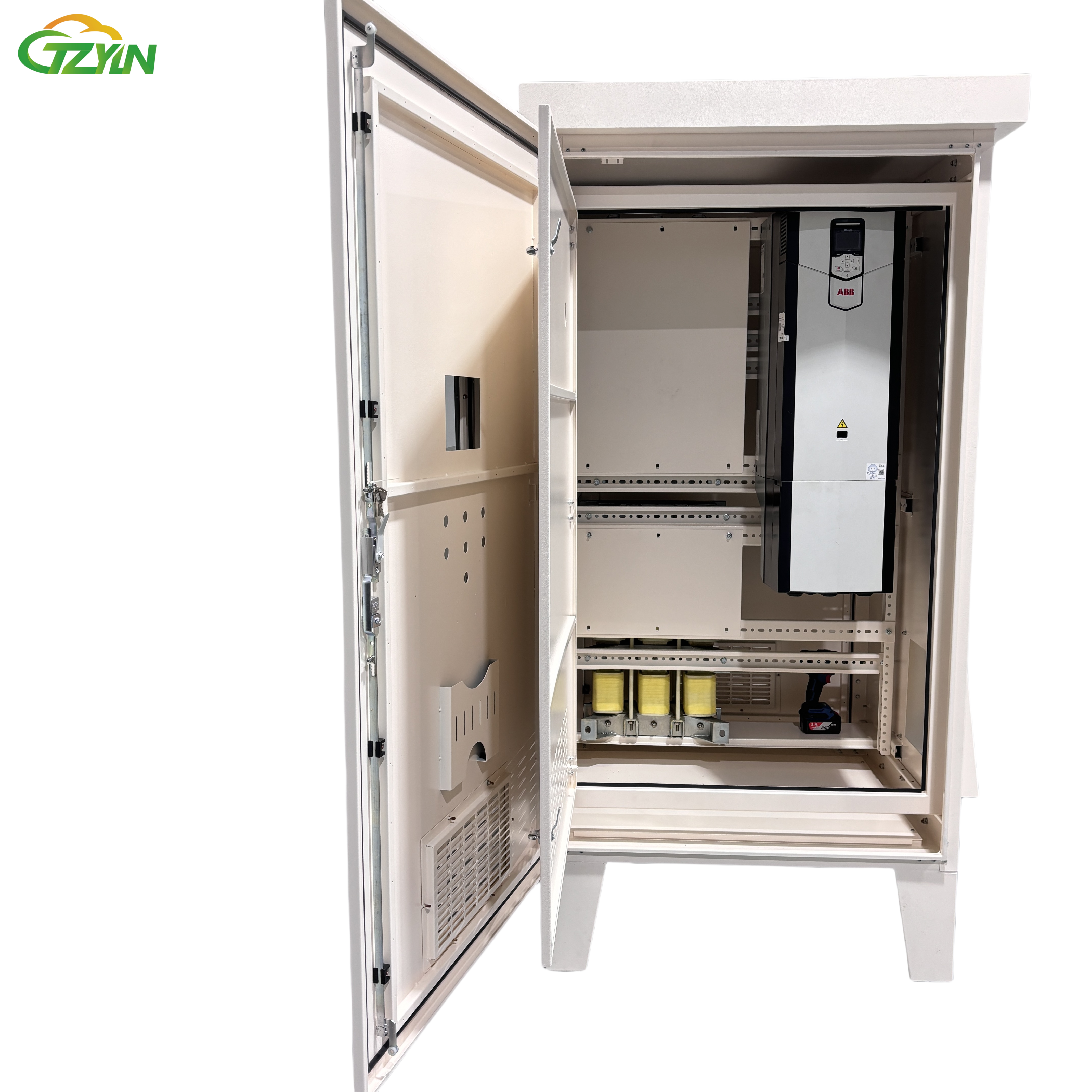Electrical switchgear panel vfd cabinets with electrical impedance are used in industry
Description

The inverter cabinet with reactor is an electrical control device that adds a reactor to the traditional inverter cabinet.
Basic composition: The inverter cabinet with reactor is mainly composed of inverter, AC input reactor, DC reactor (optional), output reactor (optional) and peripheral control, protection, display and other electrical components and cabinets. Among them, the inverter, as the core component, controls the power control equipment of the AC motor by changing the frequency of the motor working power supply.
Main function: The reactor plays a vital role in the inverter cabinet. The AC input reactor is mainly used to improve the power factor on the input side, effectively eliminate the high-order harmonics on the input side, and prevent voltage distortion from causing damage to other electrical equipment. At the same time, it can also eliminate the input current imbalance caused by the imbalance between the phases of the three-phase AC power supply.
Installation method: During installation, the short-circuit copper busbar between the main circuit terminals P(+) of the inverter needs to be removed, and then the DC reactor is connected between P(+). In addition, according to the system working conditions, EMI filters, brake units, brake resistors, contactors, intermediate relays, thermal relays, programmable controllers (PLCs), programmable operation terminals (GOTs), electric meters, cooling fans and other components can also be installed in the frequency conversion cabinet.
Application areas: Frequency conversion cabinets with reactance are widely used in industrial and agricultural production and various types of buildings for water supply, drainage, fire protection, sprinkler network pressurization, and HVAC hot and cold water circulation and other occasions for automatic control. It is suitable for various fields that require speed regulation and energy saving, such as metallurgy, chemical industry, petroleum, water supply, mining, building materials, motor industry, etc.
Advantages and characteristics: Frequency conversion cabinets with reactance have significant energy-saving effects. It can automatically adjust the speed of the motor according to actual needs, avoid unnecessary energy waste, and thus reduce energy consumption. At the same time, it also has good starting performance, speed regulation performance and multiple protection functions, such as overcurrent, overvoltage, overload protection, etc.
Note: When selecting and using frequency conversion cabinets with reactance, it needs to be customized according to specific application scenarios and load characteristics. At the same time, attention should also be paid to the selection and installation method of the reactor to ensure that it can fully play its role and ensure the stable operation of the system.

Why does the frequency converter control cabinet need a reactor?
The addition of an incoming line reactor is used for anti-interference, to prevent the inverter inside the inverter cabinet from interfering with other equipment, while the outgoing line reactor is used for filtering. The general frequency conversion carrier frequency is 2~10 khz, which can make the output waveform smoother. The incoming line reactor is used to prevent the inverter from generating harmonic interference to the power grid and surrounding equipment. Since the inverter output is a high-frequency rectangular wave, the AC waveform output by the inverter should be optimized. In addition, the grounding capacitance on the inverter outlet side can be prevented, and the cable length from the inverter to the motor side can be extended.

Is it better to add a filter or a line reactor before the frequency converter?
Filter
A device that can effectively filter a specific frequency point or frequencies outside the frequency point is called a filter. Its function is to obtain a specific frequency or remove a specific frequency. Using this characteristic, a set of square waves or composite noise can be obtained by filtering to obtain a sine wave of a specific frequency.
Line reactor
The main purpose of the line reactor is to reduce the harmonic current of the inverter rectifier unit and the rectifier/feedback unit, and also reduce the commutation gap. The role of the reactor is related to the ratio of the short-circuit power of the grid to the power of the transmission device. It is recommended that the ratio of the short-circuit power of the grid to the transmission power is > 33: 1.
The line reactor can also limit the current impact caused by a sudden drop in the power supply potential (such as compensation equipment or grounding fault). What factors should be considered when selecting a feed reactor?
1) The current of the incoming line reactor can be selected according to the incoming line current of the device, that is, the working current of the incoming line reactor can be selected according to the maximum input current of the inverter;
2) The voltage drop value of the incoming line reactor:
a. If the rectifier unit of the inverter is a non-loop rectifier unit, the input reactor should be selected with a voltage drop of 2%;
b. When the rectifier unit of the inverter is a feedback rectifier device, a 4% grid-side incoming line reactor should be used.

 EN
EN

















































